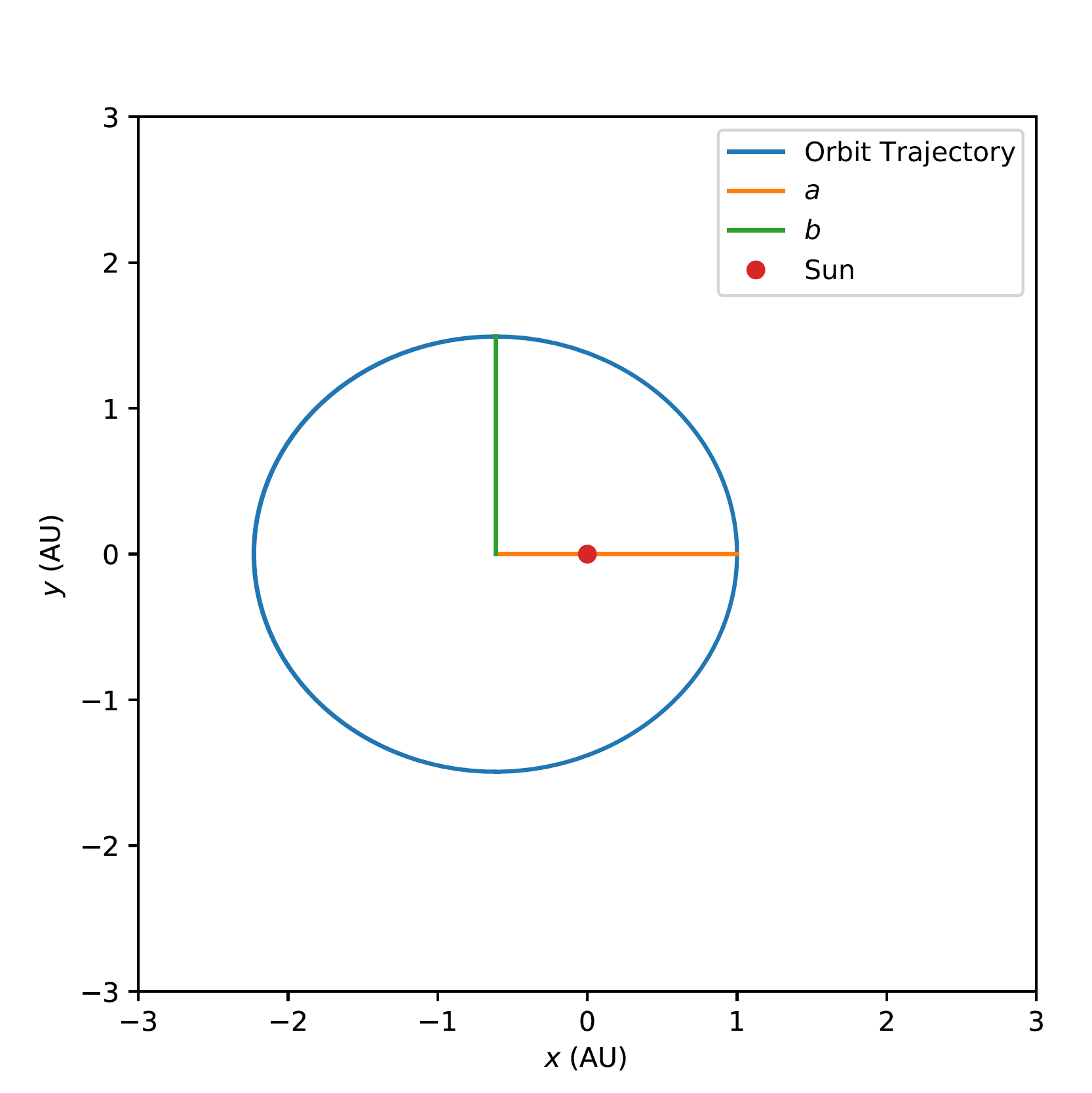Problem 3¶
In this first part we’ll learn to solve differential equations numerically in Python. In the second part we’ll use the code we write here to solve a much more complicated problem. As a motivating example, we will be proving Kepler’s first law numerically.
The force on a body of mass \(m\) at \(\boldsymbol{\mathrm{r}}\) due to a body of mass \(M\) at the origin is given by Newton’s law
In two dimensions, where \(\boldsymbol{\mathrm{r}}=x\boldsymbol{\hat{\imath}} + y \boldsymbol{\hat{\jmath}}\), the components of the acceleration \(\boldsymbol{\mathrm{a}}=a_x \boldsymbol{\hat{\imath}} + a_y \boldsymbol{\hat{\jmath}}\) are given by
A problem where we know the equations of motion and the starting point for the system is called an initial value problem and is a very common numerical problem in physics. Python comes with a few ways to easily solve initial value problems. Here we’ll use the scipy.integrate.solve_isp function.
We have to provide the function with three arguments to work (see the documentation for more). The first argument is a function \(\boldsymbol{\mathrm{F}}(t,\boldsymbol{\mathrm{X}})\) which ‘updates’ the system, this is where the equations of motion are set. This function must take the time, and a state vector as inputs and return the derivative (wrt time) of the state vector’s components. Our state vector we’ll call \(\boldsymbol{\mathrm{X}}\) and which just holds the current state of the system, in our case
So it follows that the function \(\boldsymbol{\mathrm{F}}(t,\boldsymbol{\mathrm{X}})\) must return
The first two components are simply the last two components in the input. The second two components can be calculated from the acceleration equations above. The other arguments that scipy.integrate.solve_isp requires is the initial state of the system \(\boldsymbol{\mathrm{X}}_0\) and the time span over which to solve the equations.
A few tips:
You must set the method argument of solve_isp to ”Radau” to get a stable solution.
Set the t_eval to an array of time coordinates and the function will find \(\boldsymbol{\mathrm{X}}\) at those time coordinates.
The \((x, y, v_x, v_y)\) values are stored in array at result.y where result = solve_isp(…)
Example: Kepler’s First Law¶
States that
All planets move in elliptical orbits, with the sun at one focus.
To prove this numerically, start the solver with a body at \(x=1 \mathrm{AU}\), \(y=0\) and an initial velocity \(35\) km/s in the positive \(y\) direction. Plot the \(x\) and \(y\) values and you should see an elliptical orbit. Ensure you run the simulation over a sensible time-scale, e.g. a few years.
Now check if the orbit is elliptical. The equation of an ellipse is $\( \frac{x^2}{a^2} + \frac{y^2}{b^2} = 1 \)\( where \)a\( and \)b\( are the semi-minor and semi-major axes respectively. What are \)a\( and \)b$ for this orbit? The below figure shows what the orbit should look like.

Fig. 1 The elliptical orbit for the Kepler’s law example.¶
Hint
Rearrange the above to something that looks like the equation for a straight line and fit to find \(a\) and \(b\). The \(x\) and \(y\) in the equation are centred on the centre of the ellipse but our data is centred on the sun (the ellipse’s focus). Make sure to shift your data (only necessary in \(x\)) to the centre.
